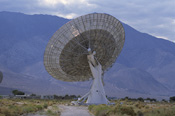
|
|
Cable and Satellite TV

While cable and satellite TV have one main thing in common - they both provide a wide variety of television programming - there are actually quite a few differences between them. Both have their pros and cons.
|
|
Cable
People who opt for cable can choose between analog and digital cable. Digital cable will usually add an average of $10 per month to the total cost of the package, but it gives better quality and allows for more channels than analog. Digital cable compresses the video transmission, allowing for the availability of more channels. It also allows for two-way communication, so people who want pay-pre-view channels can do so without tying up the phone line.
Analog cable uses an analog signal, so it is generally more reliable than a digital satellite or digital cable, which is dependant upon weather - in the midst of a terrible storm, for example, satellites might not be able to pick up signals.
Cable TV is usually more expensive than satellite, but not always. Also, cable TV does not require a contract, as most satellite companies do; instead, the customer pays month to month and can choose to cancel at any time without being subject to fines or cancellation fees.
Cable also uses much less equipment than satellite TV. Usually, all that is required for cable is a cable box and the cord that runs in and out of it.
Satellite
Satellite TV has increased in popularity in recent years, and a good deal of this can be contributed to pricing. Many satellite companies offer up to twice as many channels as cable TV for a very similar price, making satellite TV more attractive to some people.
Satellite TV also offers more programming options than cable TV. Channels often include packages such as Spanish language packages, sports channel packages, children's programming packages, and an assortment of others. Cable prices vary widely depending too on what packages or channels customers get, but they won't offer customers the same assortment of channels as satellite will.
While satellite TV often offers more channels, many times a good portion of these channels are called fillers, or channels people don't normally watch. For example, a satellite company may offer 60 channels for $19.99 a month, but upon closer inspection of the channels, customers will see that many of the channels are actually fillers. The 60 channels for $19.99 package may include 5 different home shopping channels and another 4 or 5 channels that are local programming or station guides. So it's important to take this into consideration before deciding between cable and satellite.
Equipment for satellite TV requires a dish and a receiver plus multiple remotes. Occasionally, satellite companies will charge a hefty amount for equipment, but they usually have specials that waive equipment fees because of competing dealers.
Satellite TV is also susceptible to weather conditions. People who live in an area that experiences frequent harsh storms, for example, may find that the availability of channels drops dramatically during storm season.
Part of the reason satellite TV can get away with offering so many channels so inexpensively is because they often require their customers to sign contracts that are a year or two long. People who opt out of their contract are often faced with fees up to hundreds of dollars for early cancellation.
Cable and satellite TV both have their differences as well as their pros and cons, but both are popular for television watchers.
Privacy Policy, Terms of Use